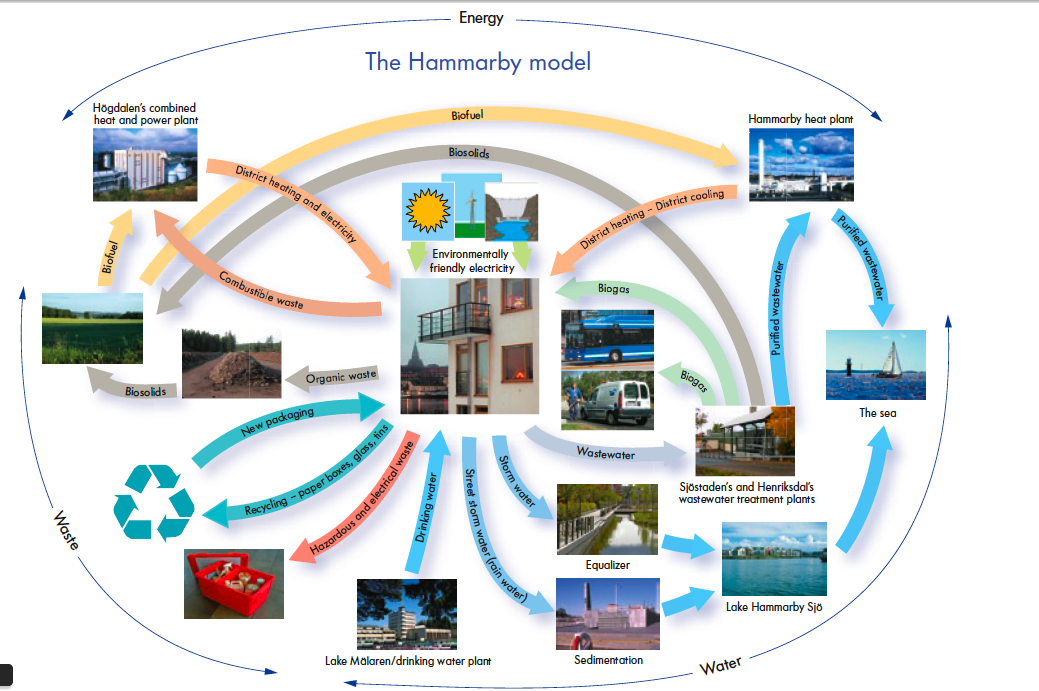Hammarby Sjöstad is a town part of the Stockholm municipality in Sweden. An idea for the current redevelopment project began in 1990s, to revive the former industrial harbor area and convert into residential use. Since then, the town is currently undergoing the construction process and will be completed by 2017.

To summarize the overall scheme of Hammarby Sjöstad: “The innercity street dimensions, block sizes, building heights, density and functionality mix are integrated with a new openness, waterfront views, parks, and sunlight”.
The town planning creates an environment that makes public transport, bike, or foot extremely convenient. In addition to a pedestrian-friendly design with bike paths, the town also has a light rail station and a ferry service that connects to the Stockholm city area. If the need for vehicles is necessary, the neighborhoods have a carpool of 25 cars available to those working and living in the area.
A new environmental program was created for this area, called the Hammarby Model, which strives to “[half] the total environmental impact in comparison with a district built in the early 1990s”. The program accounts for how to deal with matters of waste, energy, water, and sewage.
Some examples:
- Waste is tackled from a three-tier approach (building-based, block-based, and area-based) according to the bulk and hazard level of the waste. It creates a framework where it’s easy and convenient for residents to handle both everyday trash and hazardous materials like chemicals.
- There is an automated waste disposal system composed of underground tubes that transport waste via vacuum suction to a central collection station. Garbage trucks simply have to collect trash at this station, rather than wasting time going to each individual home.
- The district heating and cooling system is powered by domestic waste, and the town also incorporates solar panels to generate both electricity and heat for hot water.
- Biogas from the local wastewater plant sewage is reused as fuel for buses and cars, as well as 1,000 gas stoves in the town itself.
- All rainwater and melted snow is treated locally.
- Sedum green roofs are installed on most of the buildings.
Although the town itself is not entirely completed, Hammarby Sjöstad provides a real-life model of many possibilities in sustainable design and development. The Hammarby Model provides a schematic overview that unifies several components of green design into a cohesive vision. It’ll be exciting to see how Hammarby Sjöstad develops in the future!
If you would like to know more about Hammarby Sjöstad, you can visit their website. Green City Challenge would like to give a big thank you to Stellan Fryxell, an architect from Tengbom, for supplying the information and images for the article. Tengbom is one of the firms that significantly contributed to the design of Hammarby Sjöstad.


